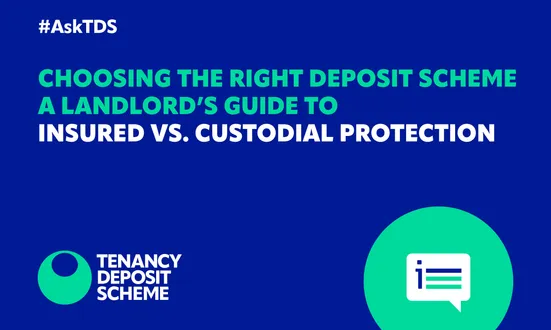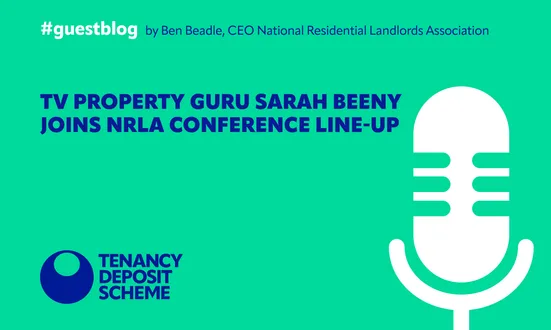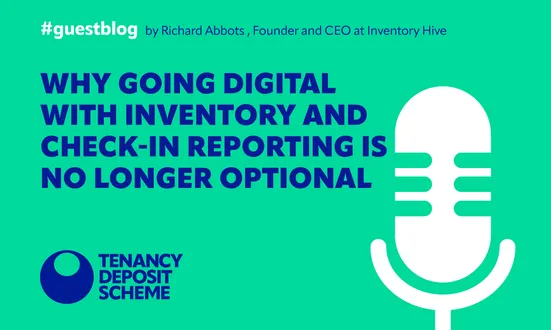At the Tenancy Deposit Scheme, we understand that every tenant deserves to know their rights and responsibilities when it comes to deposit protection. Your deposit is an important part of your tenancy, so understanding how it works can help you avoid deposit disputes and ensure a smooth rental experience. Here’s everything you need to know, including key facts, useful tips, and how to dispute deposit deductions.
What is deposit protection?
If you’re renting a property from a private landlord, your tenancy is an Assured Shorthold Tenancy (AST) and it began after April 5, 2007, your deposit must be protected. Your landlord requires you to pay a deposit, usually equivalent to four to six weeks’ rent. This deposit is meant to cover any potential damages or unpaid rent during your tenancy.
The law requires that your deposit be protected in a government-approved scheme, like TDS, within 30 days of receiving it. This ensures that your deposit is safe and can only be accessed under specific conditions.
Key facts about deposit protection
1. All landlords must protect your deposit using a government-approved scheme. If they fail to do so, you may be entitled to claim compensation.
2. There are two main types of deposit protection schemes: custodial and insured.
- Custodial Schemes: The deposit is held by the scheme until the end of your tenancy.
- Insured Schemes: The landlord retains the deposit but pays a fee to the scheme to protect it.
3. Your landlord must provide you with specific information about the scheme, including how your deposit is protected, within 30 days of your deposit being paid. Known as ‘prescribed information’, this should tell you:
- The deposit amount
- The address of the property
- The name, address, and contact details of the deposit protection scheme
- The landlord’s name, address, and contact details
- The terms and conditions of the scheme.
Check your deposit protection status
After paying your deposit, it’s always a good idea to check that it has been protected in a scheme. Ask your landlord or letting agent for the certificate or information on how to verify it online. At TDS, you can check whether your deposit is protected with us here.
The Tenancy Deposit Scheme’s tips to help your rental run smoothly
- Before you put pen to paper, take a good look at your tenancy agreement. Are you clear on what you’re signing up for? Remember, terms can differ between landlords and agencies. Understanding your rights and responsibilities as a tenant beforehand is key to avoiding any potential disputes later on.
- When you move in, document the condition of the property with photos or videos. This will serve as evidence if any disputes arise regarding damages.
- Review the inventory list if you received one, detailing the property’s condition and contents when you move in. A property inventory is a detailed record of a property’s condition and its contents at the beginning and end of a tenancy. It includes a report on everything from décor and cleanliness, to structural elements like floors and ceilings. Add any discrepancies before signing, as this list can be crucial for disputes later.
- Familiarise yourself with the concept of fair wear and tear. This refers to the natural deterioration of a property over time, and landlords cannot charge you for this.
- Keep communication records with your landlord or letting agent, especially concerning repairs or maintenance issues. This can be crucial if there are disputes about the deposit later.
- If you agree on any changes or repairs with your landlord, ensure you’ve got this in writing. This will protect you if disputes arise later.
- If you notice any maintenance issues or damage at the property, report them to your landlord or agent as soon as possible. Delaying could lead to further damage and potentially affect your deposit at the end of your tenancy.
- Before moving out, check on the cleaning expectations. Ideally the property should be cleaned to the same condition as the property was supplied in. This could be detailed within your tenancy agreement or inventory/check-in.
- When moving out, take photos of the property once you’ve emptied it. This will serve as evidence of the property’s condition and can help counter any unfair claims from your landlord.
Have a deposit dispute with your landlord or agent?
If your agent or landlord proposes deductions from your deposit at the end of your tenancy, you have the right to dispute these deductions. Here’s how to go about it:
1. Ask your landlord for a detailed breakdown of any deductions they are proposing. This should include receipts or quotes for any repairs or cleaning needed.
2. Check your photos and any documentation you’ve collected throughout your tenancy. If the property was already damaged when you moved in, ensure this is noted.
3. If you and your landlord cannot agree on the deductions, you can use the Alternative Dispute Resolution (ADR) provided for free by your deposit protection scheme. This is a service that helps resolve disputes without going to court.
4. Initiate any disputes as soon as possible. Most schemes require you to raise disputes within a specific timeframe after the tenancy ends.
Early and self resolution
The Tenancy Deposit Scheme offers agents, landlords and tenants an early and self-resolution service. Our dispute resolution team focuses on helping landlords and tenants reach mutual agreements, with formal adjudication being a last resort. The team reviews each case to find ways both sides can agree without going down the formal route. This process may involve gathering more information from one or both parties and presenting settlement offers, or even facilitating further discussions to help resolve the issue in a fair and amicable way.
If you have any questions about deposit protection or need a bit of advice, don’t hesitate to reach out to us at the Tenancy Deposit Scheme!
About TDS
The Tenancy Deposit Scheme is part of The Dispute Service (TDS), the largest tenancy deposit protection (by value) and resolution service provider in the UK making life easier for tens of thousands of agents, landlords, developers, and millions of tenants and homebuyers.
Our award-winning customer service is highly rated on both Trustpilot and Google, and we’re backed by the NRLA, Propertymark and RICS.
We provide quick and hassle-free online deposit protection, free guides and information in our online help centre, free dispute resolution and free mid-tenancy mediation for tenants and landlords.
Our free tenant lifecycle app, tlyfe, makes renting smarter. Manage your TDS deposit, get pre-qualified, build your credit ratings, and more.

Other news stories


